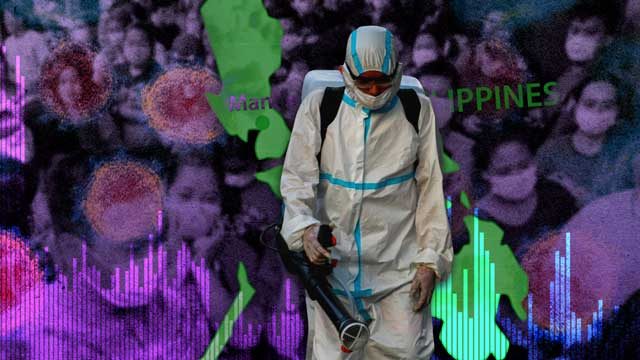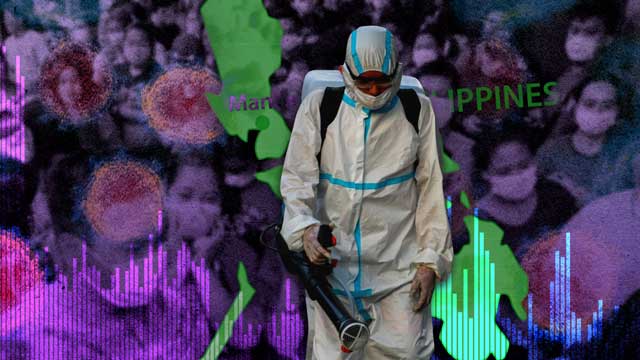SUMMARY
This is AI generated summarization, which may have errors. For context, always refer to the full article.


MANILA, Philippines (6th UPDATE) – Since the start of the coronavirus outbreak in the country, the Department of Health (DOH) has been issuing daily reports on the status of confirmed cases in the country.
Over 5 months since the first confirmed case on January 30, the total number of cases in the Philippines already breached 50,000 on Wednesday, July 8.
When the number of new cases spiked in late May, the DOH’s daily report started categorizing “fresh” cases – those whose test results were released within the last 3 days from reporting date – and “late” cases, or those with test results released after 4 days or more.
The total number of new cases reported on July 8, at 2,539, is now the highest so far, surpassing the tally on July 5, which had 2,434 cases.
So far, the highest number of fresh cases in a single day was reported on July 8, when 1,922 fresh cases were added to the count. The highest one-day tally for late cases was reported on July 5, with 1,287.
At the end of June, the number of cases came close to reaching the 40,000-figure a group of experts predicted, on account of a still high reproduction number, which indicates the “transmission potential” of a disease. While the government declared this feat a “win,” the total count eventually crossed 40,000 3 days later. The same experts projected that with the current trend, total cases may reach 60,000 by July 31.
Another group of experts from the University of the Philippines said total cases may hit as high as 95,000 by the end of August.
The chart below shows the number of confirmed cases reported by the DOH per day, including the distinction between “fresh” and “late” cases starting May 28:
In its separate daily situation reports, the DOH uses the date of onset of illness (or in its absence, the date of specimen collection) to show the earliest occurrence of the virus in each case. This is prior to the further validation of the cases that allow their inclusion in the official counts.
Looking at this chart, using data as of July 4, the number of new cases per day peaked around early June, exceeding 700 cases on multiple days that month, with the highest count at 1,359 recorded on June 25. By that time, community quarantines in many areas around the country had been relaxed.
Notice also the upward trend of cases around May and June in the chart below.
Cumulative counts
As of July 12, a total of 38,679 of 56,259 cases were said to be active, making up 68.75% of all confirmed cases.
See below how the total number for confirmed cases, active cases, deaths, and recoveries have progressed each day in the country, based on the DOH’s data.
(Find out the breakdown of cases per major area: Metro Manila | Luzon | Visayas | Mindanao)
Deaths
As of July 12, there have been 1,534 deaths out of 56,259 confirmed cases in the country. This is equivalent to a case fatality rate of 2.73% for the Philippines, placing second among ASEAN countries.
As in the tally for total cases, there are delays in reporting out the deaths and adding them to the national tally. The DOH had explained that the recent spikes in reported COVID-19 deaths were due to “a delay in the submission of validated mortality cases” from local government units to the department’s epidemiology bureau.
For instance, out of the single-day record of 162 deaths reported on July 12, the DOH said 20 died in May, 90 in June, and 51 in July.
Looking at the deaths by date of death, the DOH pointed to a downward trend in the number of new COVID-19 deaths, from a peak around late March.
As of July 11, only 1,326 of 1,372 reported deaths (or 96.65%) have dates of death and are labeled as “Died” in the DOH dataset.
Below, switch between the chart for deaths by date reported and by date of actual death by clicking on the navigation arrow at the top-right corner.
Recoveries
As of July 12, there have been 16,046 recoveries out of 56,259 confirmed cases in the country. This means a case recovery rate of 28.52% for the Philippines.
So far, the number of reported recoveries per day has not gone down below 200 since June 11.
The most recoveries reported in a single day was 2,009, on July 12.
See below the chart for recoveries by date reported.
Meanwhile, in the DOH dataset as of July 11, only 5,977 of 14,037 recoveries indicate a date of actual recovery and are tagged as “Recovered.”
Compared to ASEAN
Among members of the Association of Southeast Asian Nations (ASEAN), the Philippines has the highest rate of active cases, and the lowest case recovery rate thus far.
In terms of case fatality rate, the country ranks second, next to Indonesia.
The Philippines now ranks second in terms of the number of total cases, first in terms of total active cases, and second in terms of the number of cases per 1 million population.
– Rappler.com
Add a comment
How does this make you feel?
There are no comments yet. Add your comment to start the conversation.